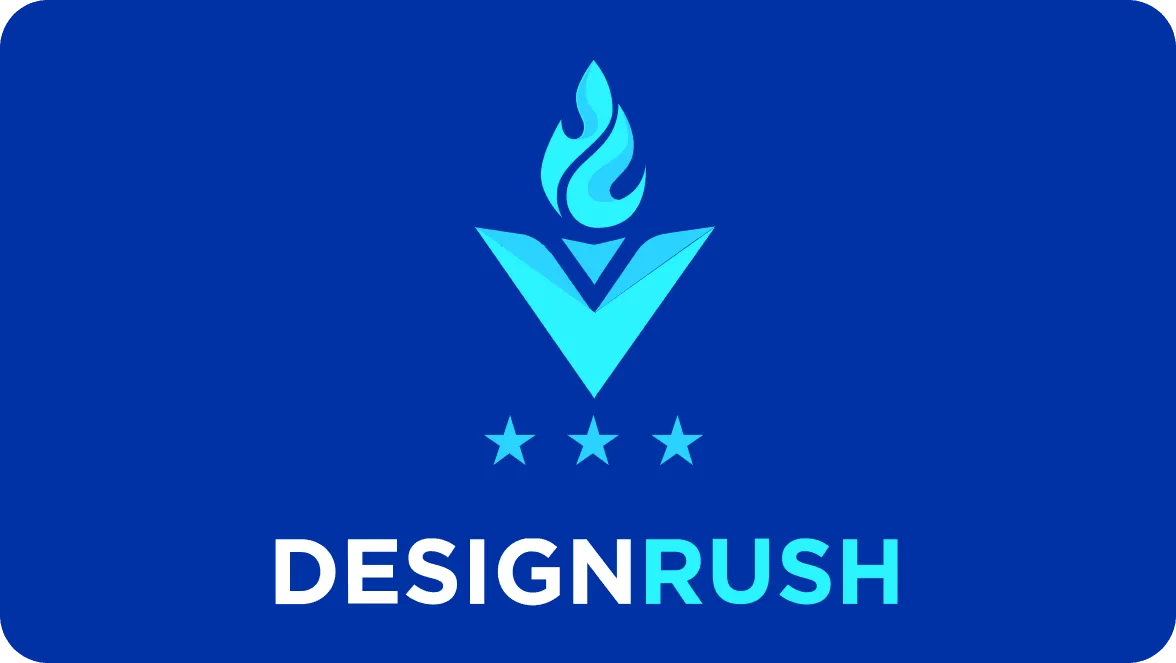
High-quality software development requires considerable effort. However, many development options are available today, and businesses must determine the most effective strategy. This issue has sparked a debate between those who favor in-house development – or outsourcing. As outsourcing is becoming more prevalent in the corporate sector, it's not unexpected that this methodology is gaining popularity in technology.
With the growth of remote and hybrid workplaces, as well as the "great resignation" and increasing adoption of advanced technologies, it's most likely that the outsourcing industry will keep growing. With a projected 22% surge in IT outsourcing spending from 2019 to $519 billion by 2023 and a 19% increase in global business process outsourcing spending from 2019 to $212 billion by 2023, the growth is quite evident. Furthermore, Grandview Research predicts that the business process outsourcing sector will grow to $525 billion by 2030.
A clear understanding of the core distinctions between these two development methodologies, as well as the advantages and drawbacks associated with each, will help you to determine the optimal choice for your business.
In this article, we discover in-house vs outsourcing software development, the main differences, and their pros and cons. You will also find insights into when it is best to opt for one of these options over the other. Keep reading!
Using an in-house team for your projects
Choosing the in-house option doesn't always require hiring new staff. Your organization may already have the desired expertise on board. If you have assembled the right team and given thorough attention to this process, it may occur that you already have the desired expertise on board.
However, in the case of complex projects, you may require new talents with specific skill sets and experience. Building an IT team through recruitment, interviewing, and onboarding of new employees can lead to spending additional expenses and take time. Moreover, you may also incur training and development costs to equip the team with essential skills and knowledge for successful project completion.
When to choose an in-house development
When you’re an IT-focused startup. If your startup is primarily focused on an IT product, in-house hiring may be a viable option.
When your company has a significant amount of resources. In-house development is the best choice for companies with abundant resources, sufficient budget and time for software development. It allows investing more time and resources in hiring and onboarding employees, as well as in paying for the local workforce, office, overheads, etc.
When you aim for long-term strategies and fostering company culture. In-house development is well-suited for companies that require high levels of intellectual property and data protection and are dedicated to long-term strategies and developing a strong company culture. Furthermore, an in-house team is advantageous for products that require continuous updates and optimization.
Pros and cons of in-house development
Before deciding on hiring an internal team on board, it is important to weigh the in-house vs outsourcing pros and cons.
Total control
An in-house development team provides the greatest advantage of having complete control. You have the flexibility to efficiently use your workforce and train them according to your company's software philosophies, culture, and the required technologies. This long-term employment also means that they clearly understand the business requirements and vision of the company.
Effective communication
In-house teams have the advantage of being exclusively dedicated to your company, no matter whether they work remotely or on-site. This leads to much more efficient collaboration and communication. You can discuss and implement changes faster without the back-and-forth that often comes with outsourcing. The entire team remains perfectly aligned with the project requirements and updates made to the software.
Enhanced support
The support you receive depends on the quality of your team. If you outsource software development, the company may have other clients to prioritize over you. However, in-house development takes the lead in providing immediate and high-quality support.
As dedicated employees, your in-house team members can focus exclusively on your company's needs. You can ensure immediate support when something doesn't go as planned.
Handpick your team
Choosing an in-house team makes the software development process more efficient and productive as it allows you to gather talents that match your company's culture and requirements. Having an in-house team can also create a stronger sense of commitment among team members.
It enables you to form a team of experts whose expertise and experience match your organization's expectations and needs. Although the hiring process can take longer, this approach allows you to recruit developers who best suit your needs.
Cons of in-house hiring
Let's discover the main disadvantages of in-house development that you may face:
Limited access to talents
When choosing an in-house development vs outsourcing, be aware that talent pools can be limited, especially in smaller or remote areas. Thus, a company may face a lack of skills and expertise required for software development tasks, leading to decreased productivity and hampered company growth.
In this case, we recommend outsourcing software development, which has a wider range of resources and expertise to provide for a company.
High cost
Building an in-house development team can become a significant financial burden as it involves the expenses of hiring, onboarding, and managing the team, providing them with essential equipment and software licenses, and controlling all overhead costs like salaries, benefits, insurance, etc. These expenses can add up quickly, particularly for startups or small businesses, making it a costly and time-consuming task to launch your own team.
Time-consuming
In-house software development vs outsourcing can be a time-consuming process since it requires allocating resources to recruit, train, and manage the development team. Additionally, continuous support and maintenance for the software product must be provided.
Project failure risk
To ensure successful project implementation, a development team requires a significant level of technical proficiency and specialized knowledge in a particular domain. Keep in mind that in case of a project failure, the company faces the initial costs but also the subsequent expenses related to starting from scratch or outsourcing to a third-party provider.
Setting up a dedicated development team
A dedicated team is an outsourcing approach where a remote team of developers is hired to work exclusively on your project. This team becomes an extension of your in-house team and works collaboratively with you to achieve your app development goals.
Building a dedicated team (DDT) model involves careful planning and specific requirements. Here we outline some essential considerations and requirements to keep in mind:

- Clearly define the project scope: Before setting up a dedicated team, it's crucial to have a clear understanding of your project's scope and objectives. Clearly define the tasks, deliverables, and timeline to ensure the team's focus and alignment.
- Identify required skills: Assess the required skills and expertise necessary for your project's success. Determine the specific roles and responsibilities within the dedicated team, such as developers, designers, project managers, and quality assurance specialists.
- Team composition: Consider the ideal team size and composition based on your project's complexity and workload. Evaluate the number of team members required and their individual skill sets to ensure efficient collaboration and seamless workflow.
- Talent acquisition: Source and recruit professionals with the required skills and experience. Depending on your preference, you can hire team members locally, internationally, or through outsourcing agencies. Conduct thorough interviews and assessments to ensure the right fit for your project.
- Communication and collaboration tools: Establish effective communication and collaboration channels within the dedicated team. Implement tools such as project management software, messaging platforms, and video conferencing tools to facilitate seamless interaction and information sharing.
- Performance monitoring: Implement performance tracking and monitoring mechanisms to evaluate the team's progress and productivity. Regularly assess key performance indicators (KPIs) to ensure the team is meeting project goals and adhering to established timelines.
By considering these specifics and requirements, you can establish a robust and efficient dedicated team model that meets your project's objectives and drives successful outcomes.
When does DDT fit best?
The dedicated team model is most suitable in the following situations:
Long-term projects
When undertaking projects that extend over a substantial period, such as a year or more, opting for a dedicated team is an appropriate decision. The team is assembled specifically for your project and can provide continuous support until completion.
Complex or ambiguous requirements
When your project involves intricate or unclear specifications, a dedicated team is better equipped to handle the challenges with greater effectiveness. This dedicated team is already established, relieving you of the burden of managing them single-handedly. The advantage of such a team is their ability to work in harmony, ensuring seamless collaboration and effective communication among team members to achieve the project's objectives.
Accelerated development timelines
Dedicated teams are adept at delivering projects within tight deadlines. They are accustomed to working collaboratively and efficiently, providing faster development cycles and timely project completion.
The benefits and possible drawbacks of the DDT
Are you aware of the advantages of adopting a dedicated team model to fulfill your app development requirements? Let’s discover outsourcing software development pros and cons:
The benefits of the DDT
The dedicated development team (DDT) model offers several key advantages that can greatly benefit organizations in their software development endeavors:
Access to specialized skills
If your project requires specific expertise or niche knowledge that is not readily available in-house, a dedicated team can fill those gaps. You can tap into a global talent pool to find professionals with the exact skills required for your project's success.
Cost efficiency
In comparison to maintaining an in-house team, a dedicated team can be more cost-effective. You only pay for the time and resources dedicated to your project, avoiding additional overhead costs associated with permanent employees.
Flexible resource allocation
Dedicated teams offer flexibility in resource allocation. The ability to adjust the team size according to project needs enables you to optimize costs and maintain an ideal team composition throughout the various stages of the project.
Continuous support and maintenance
After the initial development phase, dedicated teams can provide ongoing support and maintenance for your software product. Since they are already familiar with the codebase and have worked on the project, they can swiftly address any issues or implement updates as required. This expertise and familiarity with the project can result in efficient problem-solving and timely maintenance, enhancing the overall stability and functionality of the software.
Possible drawbacks of the dedicated team model to keep in mind
This model also has some disadvantages that might arise in some cases, among which:

Communication challenges
Engaging with a remote team can bring up obstacles such as time zone differences, language barriers, and the absence of in-person interaction. As a result of these challenges, ensuring effective communication and collaboration may require additional effort.
Reduced control
While a dedicated team brings valuable expertise and resources, it's essential to recognize that you may have a lower level of control over the work schedules, priorities, and decision-making processes of team members. Given their independent operation, the level of control cannot be equivalent to that of an in-house team.
Dependency on external providers
When implementing a dedicated team model, you depend on external service providers or agencies to handle the assembly and management of the team. This dependency means that any issues or delays related to the service provider can impact your project. If you choose to terminate the engagement with a dedicated team, you may need a seamless transition to another team or internalize the project. This transition process can involve investing extra time and effort in knowledge transfer, ensuring continuity, and adapting to new team dynamics. It's crucial to choose a reliable and reputable provider to mitigate this risk.
Alignment and integration
Collaborating with a dedicated team involves integrating them into your existing processes and aligning their work with your business objectives. It's essential to recognize that this integration process may take time while the team familiarizes themselves with your company's culture, values, and workflows. Building a strong understanding and seamless integration is key to successful collaboration.
Security and confidentiality
When collaborating with an external team, it is important to address data security and confidentiality concerns. Safeguarding sensitive information and intellectual property requires implementing appropriate measures and ensuring the team adheres to confidentiality agreements.
Considering these possible drawbacks, evaluate their significance in relation to your project's scope, timeline, and expected outcomes. Thus, you’ll be able to determine if the dedicated team model is a suitable choice that balances its benefits with any associated challenges.
Making a decision: in-house development or dedicated development team
So how do you choose between in-house development vs outsourcing? The decision to embrace a dedicated team model should rely on how well it aligns with your project requirements, budget constraints, and long-term goals. Evaluating these factors will help you assess whether a dedicated team is the optimal choice for your specific project.
In-house software development with greater control and direct communication with the team can also be a costly, time-consuming, and risky approach. Be ready to invest in hiring, onboarding, and managing a team of developers. Additionally, the expert team will require continuous support and maintenance for the software product.
Regardless of the path you choose, open communication and straightforward collaboration with the development team are crucial to project success. Therefore, it's important to invest the necessary time in careful planning that aligns with your goals. Think twice, evaluate your investments, and define goals and objectives that help you to choose the right solution.
Wrapping up
DigitalSuits experts care about each project as we know that every one of them is unique. That is why we use a personalized approach to development to ensure that our solution will unfailingly meet your specific needs. Our dedicated development company has worked with clients from various industries and we can say that our track record can be proof of that. We provide all necessary discovery steps to ensure that you get a solution that meets your expectations.
Frequently asked questions
What do you really need: an in-house team or a dedicated development team?
When deciding between an in-house team or a dedicated development team, it's important to assess the project duration and consider the following aspects to guide your choice:
Expertise evaluation: Consider the level of technical complexity involved in your project. If it requires advanced skills and expertise that are not readily available within your in-house team, opting for a dedicated development team might be more suitable.
Flexibility: Evaluate the flexibility you need in scaling your team based on project requirements. If your project demands fluctuating resource allocation, a dedicated development team offers more flexibility compared to maintaining a fixed in-house team.
Cost considerations: When it comes to costs, it's important to weigh your options. Keeping an in-house team means ongoing expenses like salaries and benefits. On the other hand, a dedicated development team offers cost savings since you only pay for the services and resources you actually use, avoiding long-term financial commitments.
Time constraints: Evaluate your project timeline and urgency. Dedicated development teams are accustomed to delivering projects within tight deadlines, as they are well-coordinated and focused on specific tasks. If you have time-sensitive projects, a dedicated team may expedite the development process.
Control and communication: Determine the level of control you require over the development process. In-house teams offer direct control and immediate communication, whereas working with a dedicated team may involve some level of delegation and remote collaboration.
Long-term vs short-term projects: Long-term projects benefit from a dedicated development team's continuous support and expertise. They are formed to work on your project throughout its duration, ensuring consistent progress and unwavering assistance. On the other hand, for short-term projects with tight timelines, a dedicated team offers flexibility by quickly assembling a skilled team to meet specific requirements within the given timeframe. This agility enables efficient execution and timely delivery.
What are the risks associated with the dedicated team model?
Communication challenges: Working with a remote team may lead to difficulties in communication due to different time zones, language barriers, and limited face-to-face interaction. It may require extra effort and the use of communication tools to ensure effective collaboration.
Lack of control: Opting for a dedicated team may result in reduced control over their work schedules, priorities, and decision-making processes when compared to an in-house team. As they operate independently, your ability to exert control over the project may be impacted.
Data security and confidentiality: Sharing sensitive information with a dedicated team requires measures to protect intellectual property and maintain confidentiality agreements. There may be concerns about data security and confidentiality when working with an external team.
Integration and alignment: Integrating the dedicated team into your existing processes and aligning their work with your business objectives may take time and effort. It may require the team to understand your company's culture, values, and workflows.
Dependency on external service providers: With the dedicated team model, you rely on external service providers or agencies to assemble and manage the team. This is connected to certain dependency on external entities.
How can I ensure a successful partnership with a dedicated team model?
To ensure a successful partnership with a dedicated team as a client, consider the following steps:
- Define project requirements: Clearly articulate your project requirements, goals, and objectives to the dedicated team. Provide comprehensive documentation and specifications to ensure a shared understanding of expectations.
- Evaluate potential providers: Conduct thorough research and evaluate multiple dedicated team providers. Consider factors such as their experience, expertise, portfolio, client testimonials, and cultural fit. Select a team that aligns with your project requirements and values.
- Establish open communication channels: Set up effective communication channels with the dedicated team, such as email, project management tools, and regular video meetings. Encourage open and transparent communication to foster collaboration and address any concerns promptly.
- Provide adequate onboarding: Ensure the dedicated team receives proper onboarding and orientation to your company, project, and processes. Familiarize them with your brand, values, and desired outcomes to facilitate a smooth integration.
- Set clear expectations: Clearly communicate your expectations regarding project timelines, milestones, deliverables, and quality standards. Establish a shared understanding of the project scope, budget, and any specific requirements.
- Monitor the progress regularly: Stay actively involved in the project by monitoring progress and conducting regular check-ins with the dedicated team. Review milestones, track deliverables, and provide timely feedback to ensure the project stays on track.
- Foster collaboration and trust: Foster a collaborative and trusting relationship with the dedicated team. Encourage teamwork, knowledge sharing, and cross-functional collaboration to leverage their expertise and maximize project outcomes.
- Address issues promptly: If any issues or challenges arise during the project, address them promptly and openly with the dedicated team. Encourage proactive problem-solving and work together to find viable solutions.
- Provide feedback and recognition: Regularly provide constructive feedback to the dedicated team to guide their performance and improvement. Recognize and appreciate their contributions to maintain motivation and morale.
- Evaluate the partnership: Continuously evaluate the performance and value provided by the dedicated team. Assess their alignment with your project goals, responsiveness, and overall satisfaction. Make adjustments or consider changes if necessary.





































Was this helpful?
0
No comments yet